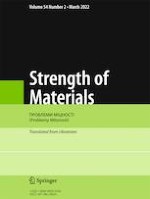13.06.2022
Study on Foreign Object Damage Law of Titanium Alloy Blade of an Aero-Engine Impacted by Sandstone
Erschienen in: Strength of Materials | Ausgabe 2/2022
EinloggenAktivieren Sie unsere intelligente Suche, um passende Fachinhalte oder Patente zu finden.
Wählen Sie Textabschnitte aus um mit Künstlicher Intelligenz passenden Patente zu finden. powered by
Markieren Sie Textabschnitte, um KI-gestützt weitere passende Inhalte zu finden. powered by
